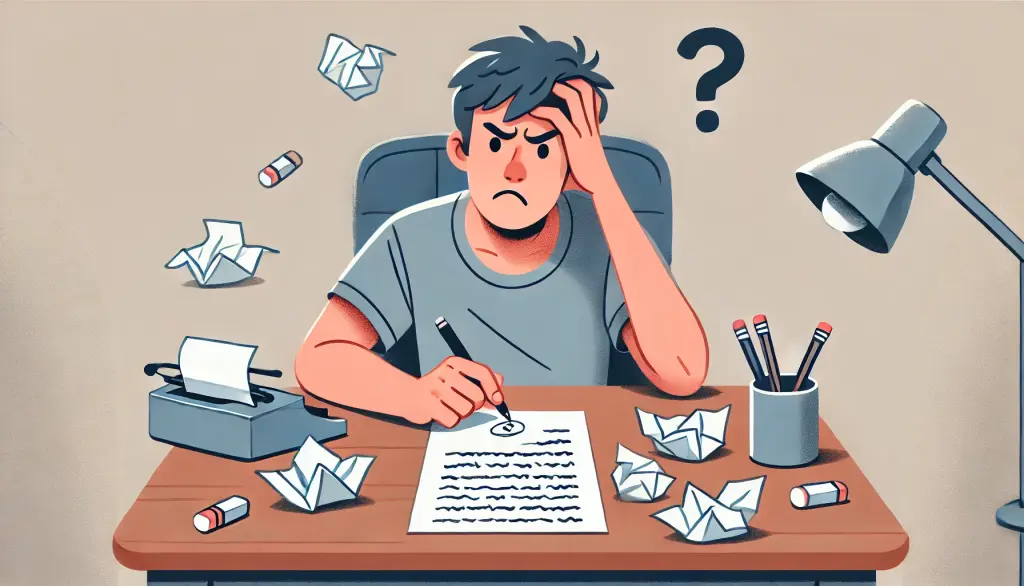
"Why is my handwriting so bad?" This is a common question asked by students, adults, and even professionals. Handwriting reveals a lot about an individual, and many feel self-conscious or frustrated when their writing appears messy, illegible, or awkwardly formed. But poor handwriting is rarely just a matter of personal style or effort. Various underlying causes often contribute. Here we explore the reasons behind bad handwriting while presenting helpful tips and solutions to improve your penmanship.
Many factors come into play when considering why handwriting might be challenging or appear messy:
Good handwriting qualities are typically developed early in childhood. Without proper instruction and practice in letter formation, spacing, and neatness, handwriting problems persist and multiply later on, even adulthood.
Effective handwriting requires motor coordination and hand-eye coordination. Challenges or deficits in these abilities may lead to weak or awkward pencil grip, difficulty forming accurate letters or numbers, and irregular handwriting.
In today’s fast-paced environment, many people rapidly write down notes, ideas, or information. Writing quickly without sufficient control often creates smudged, unclear, and illegible handwriting.
Improper pencil grasp, too loose, too tight, or awkward, can significantly diminish your control, causing writing fatigue, discomfort, and messy letters.
With increased reliance on digital typing (email, texting, social media), handwriting grows infrequent. Limited regular practice makes neat, consistent handwriting difficult to maintain or achieve.
Sometimes individuals experience handwriting challenges due to neurological or learning conditions such as dyslexia, dyspraxia (Developmental Coordination Disorder), dysgraphia, ADHD, or autism. These conditions might affect fine motor skills, motor coordination, attention accuracy, or spatial processing, impacting handwriting legibility and quality.
Poor-quality writing tools, like uncomfortable or slippery pens, or writing on uncomfortable surfaces or improper ergonomics, create additional frustration and negatively impact handwriting quality.
Now that you've identified potential reasons for messy writing, here are several practical strategies to improve your handwriting effectively:
Remember, legibility trumps speed. Slow down, take your time, and spend extra effort writing individual letters clearly. Over time, your speed will gradually improve as you form better habits.
Use correct posture and pencil grip for better results. Hold your pencil comfortably but firmly between your thumb and first two fingers. Rest your hand lightly and naturally on the writing surface, using paper angles or grips that suit your comfort.
Experiment with different pens or pencils to find comfortable ones. Ergonomic ballpoint or gel pens often help individuals achieve smoother handwriting.
Boosting fine motor skills improves your handwriting. Engage in activities designed for hand strength, grip stability, and motor coordination, including clay sculpting, cutting, coloring, mazes, or finger exercises.
Like any skill, handwriting improves with consistent and frequent practice. Aim for regular handwriting-based activities, daily to-do lists, journals, or hand-copying short paragraphs of text.
Handwriting worksheets specifically target letter shapes, spacing, and slant, helping you systematically refine your letters’ accuracy and uniformity.
Various specialized resources, classes, programs, and tutoring exist designed specifically to improve handwriting and penmanship. These targeted resources benefit those who need structured guidance or personalized feedback.
If your handwriting significantly impacts daily living or learning tasks and does not seem to improve with regular practice, consider consulting a specialist such as an occupational therapist. Occupational therapists identify underlying challenges and can provide tailored interventions to improve writing skills.
Though many daily tasks have shifted online or to digital methods, clear handwriting remains essential and beneficial:
If your handwriting frustrates you, don't despair, you're not alone. Recognizing potential causes and implementing practical, structured solutions can substantially improve your writing legibility and style. Remember, handwriting improvement takes patience, deliberate practice, and realistic expectations. Give yourself permission to progress slowly and rediscover your handwriting confidence as you bring clarity and personalization back to this fundamental skill.
You might also like:
The digital handwriting activities for kids are both engaging and ideal for learning to write well in a personalized way
The handwriting assessment for kids quickly evaluates writing quality, including legibility and form
The handwriting worksheets for kids are available in many fonts, both cursive and manuscript, in an easy-to-print PDF format